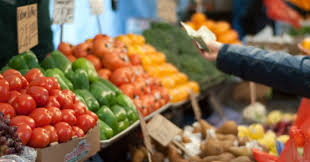Types of food purchasing
If you are the one who is looking to know what are different types of food purchasing that various establishments used are then you are on right place to explore about food purchasing.
Various food establishment sets it own purchasing policies according to its specific needs for different types of food. There are different methods of purchasing. The choice of the purchasing will depend upon the item to be purchased, frequency of requirement, quantity to be purchased and the market situation, etc., none of the methods is best for all purchases.
Different types of food purchasing are :-
• Open market buying / Informal
• Competitive Bid Buying
• Negotiated Buying
• Wholesale Buying
1.Informal or Open Market Buying
Utmost food service establishments use the informal styles for buying food particulars. The buyer invites quotation from suppliers for particulars according to needed specifications. The suppliers are also selected on the base of the sample, prices, delivery scheduling ,etc. Open request buying is an informal system and can fluently be acclimated to individual establishments. It's generally used for purchasing of perishable foods like fruits, vegetables, meat etc. This method of buying helps to appreciate and be aware of the change in market situations and make the best use of prices and commodities by using instant discretion in purchases. This type of buying involves purchasing food commodities on daily, weekly or monthly basis. Order is generally placed after consideration of price in relation to quality and delivery offered. This type of purchasing can be done by visit to markets or via telephone after monthly quotation list for grocery items have been given. In this type of buying a buyer can choose from a list of vendors for various items that are required. In this way, comparison of prices between various vendors can be made.
2.Formal or Competitive Bid Buying
In the competitive bid buying, the formal quotations are invited from the sellers against the written specification of each category of foods. This request for bids material is widely distributed or posted to the interest of the sellers. Along with the specification the buyers also include their request, conditions like last date of quotation, general time between orders and delivery, willingness to accept whole or part of the bid, discount, and so on framed within the purchasing policy of each establishment.
The quotations entered remains sealed till the date of opening .The copping officer then opens them in presence of the representatives from the department, accounts and executive staff, who witness the quotation accepted. The practice is to accept the quotations of the smallest bidder, unless products easily fail to meet the specifications. Government establishments generally take up formal methods of buying for which central purchasing is done such as, hospitals or government schools, colleges, universities.
After knowing the procedure for formal system of buying, let us understand some terms generally associated with the formal buying. These are defined herewith.
3.Negotiated Buying
This involves negotiations between buyer and the sellers regarding the price and quantities. This method is used generally for seasonal items, which are limited in supply, where both buyer and the seller are keen that the product is lifted quickly from the market. Negotiated buying, therefore, involves taking quick decisions in fluctuating market. The buyer contacts the seller directly, negotiates the price and the quantity and request bids are submitted as soon as possible. This method is thus quick and more flexible and less formal. Negotiated buying may be adopted when purchasing food items directly from farmers or manufacturers, but this is generally possible only for very large establishment .Because the contracts with manufacturers would be feasible for large quantities. The advantage is of course in terms of quality, as well as, price,. but storage cost increases.
In this two types of contracts may be signed between the buyer and the seller. This include:
1) A Finn at Opening Price Contract (FAOP)
In this type of contract, the buyer agrees to take the supplies at a price established in the future when yield is known, rather than at pre-season prices when the contract is made. Such an agreement is therefore firm but not signed till the seasonal yield is known.
2) A Subject to Approval of Prices (SAP) Contract
In this case the buyer has the option of rejecting the orders if the fixed price in the future is not acceptable to him.
4.Wholesale Buying
In this method a contract is signed with the whole seller for purchase of goods at a specific price for a future period. The agreement specifies the interval between the deliveries for the contract period, along with the quantities required and when. This method is also suitable for larger organization or central purchase departments. Whatever method is used for purchasing food, it is advisable to make the procedure simple with minimum paper work.
Blog Article by Baithina Saisree
MSc II year.




Comments
Post a Comment